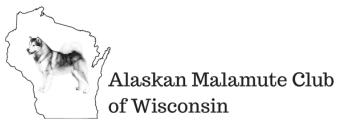Temperament
Malamutes are strong-willed, determined, yet friendly dogs. Because of this, they should have obedience training from an early age. A malamute should not be walked off lead. Once they make up their mind to chase something, it is very difficult to call them back unless they are ready to come back. Because the malamute is friendly and generally likes all people, they do not make good guard dogs, although their size can be a visual deterrent.
A malamute’s friendliness does not always extend to other dogs, especially of the same sex. While this does not mean that same sex malamutes should be kept apart, it does mean that supervision should be used when bringing same-sex malamutes together.
Malamutes are not loyal to one person or one family. They are “pack animals,” using their intelligence to bond with many they come in contact with, be it family, friends, or strangers. As a companion, the malamute is excellent, ready to please and eager to be a part of your life.
Care and Feeding
Malamutes need exercise, and lots of it. A big yard where they can run is ideal. Do not let your malamute become bored, as this can result in a backyard landscape you did not design. If the malamute is an indoor dog (although they prefer to be outdoors), you may find trash in places other than the trash bin.
In the hot summer months, a malamute can overheat, so you as an owner must be conscious of this, and be able to provide shade and plenty of cool water. A malamute’s interest in exercise tends to diminish in the summer, but you must make sure they get their exercise, but only in short intervals.
Malamutes are efficient eaters, so they do not need to eat much. However, they will eat anything they can get their paws on, including table scraps. This is a survival instinct. And then there’s the hair. Twice a year the malamute will shed it’s undercoat. Be prepared to brush your malamute many times during this time. Do not be surprised at how much hair you get. Their undercoat is very thick.
What is the difference between An Alaskan Malamute and a Siberian Husky?
There are a number of differences between the two breeds. To see the differences between the Malamute and the Husky, click here.
“So how do I know if the malamute is right for me?”
If you do not like a lot of hair, or are not a person to spend time outside and participate in many different activities with your dog, then the malamute may not be for you. Likewise, if you want a devoted companion, one that will defend your life and property, look elsewhere. But if you want a dog that is loving and lovable in nature, with the intelligence and personality to match then the malamute will offer a lifetime of fun and enjoyment.



